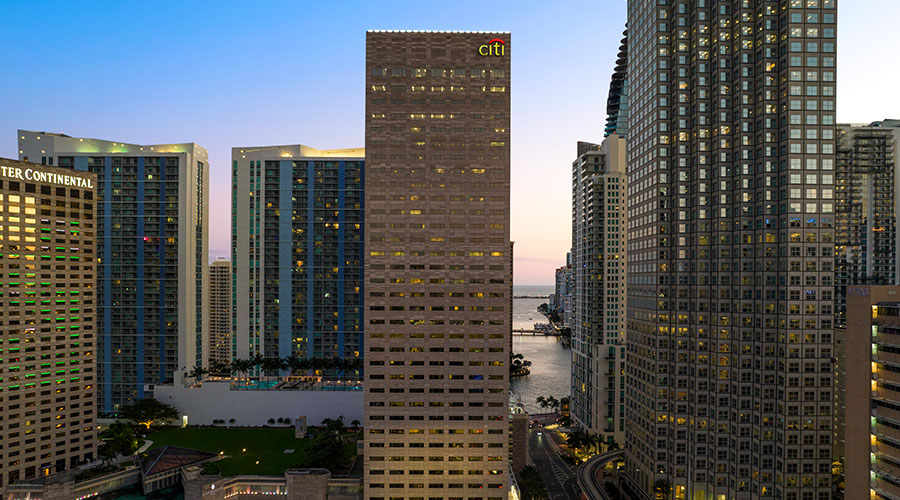Companies Ponder 'New Normal' for Office Space
A survey by a leading architectural firm shows how the workplace continues to evolve as the pandemic is slowly winding down.
Ping pong and pizzas. Candy and kombucha on tap. Before the pandemic, companies pulled out all the stops to create dynamic office experiences that would help attract and retain employees.
Now, with a year of the COVID-19 pandemic lockdown behind us, we still don’t fully know what the new workplace paradigm will be. At the pandemic’s height over the summer of 2020, 40 percent of the U.S. labor force was working from home full-time, according to a Stanford study.
Remote here to stay
Remote work – in one form or another – is clearly here to stay, but questions remain about what offices will be and become. Among the studies providing answers is the “Future of the Workplace: The Next Normal” survey by Vocon, a national architecture, design and workplace strategy firm.
Altogether, 103 corporate leaders, who employ nearly 1 million workers at 72 companies nationwide, took the survey. Among its key findings: Just 12 percent of employers expect all their workers will return to the office after the pandemic. Survey participants included senior leaders in real estate; finance, law and insurance; architecture, design and engineering; manufacturing; social services; professional services; tech and software; plus healthcare and logistics.
The study found that flexible work policies are now widely accepted and that there will be significant changes to the office and the way we work. Some highlights:
- 66% of the employers polled are implementing a hybrid model with on-site office and remote work
- Nearly 70% of companies are keeping flexible work policies to attract and retain talent
- 50% are keeping flexible work policies because employees are requesting it
Working remotely gets results
Remote work options will stick around partly because employees have mostly performed well. Eighty-eight percent of Vocon’s survey respondents report that their teams’ performance has either remained consistent or increased during the pandemic’s remote work period (only 20 percent say performance has decreased).
That’s not to say there haven’t been issues with working from home. Among the top remote-work challenges cited were:
- Professional development (mentioned by 58% of corporate leaders)
- Onboarding (51%)
- Keeping employees connected to corporate culture (62%)
- Work burnout (43%)
With only about 17 percent of Americans fully vaccinated (as of April 2), companies are beginning to answer tough questions about, “Who will stay home, how they will be supported and what the office will look like?”
Offices transforming, not dying
For workers who plan to continue remote work, 24 percent of employers intend to help set up home offices by providing resources like equipment, WiFi upgrades or a stipend, while 28 percent of companies don’t plan to assist employees and 44 percent are unsure.
As for return plans, over 20 percent of companies have already brought their employees back to the office, while 30 percent don’t plan to do so until a vaccine is widely distributed and 16 percent are unsure when employees will come back. Another 15 percent say workers will not return until Quarter 3 and just 14 percent expect to bring workers back in Quarter 2. The employees who do return can expect big changes, from staggered and hybrid (in-office and remote work) schedules to changes in the technology, layout and design of the office.
Some of the changes include:
- 33% of companies are implementing room reservation systems
- 28% are using hoteling or “hot desk” models in which workers store possessions in company lockers and reserve open, unassigned desks
- 22% are adding health screening kiosks, apps or other safety devices
- 21% are adopting touch-free access controls
- 18% are adopting occupancy and capacity sensors.
Some have even speculated that companies will close their offices after the pandemic to achieve cost savings. However, in a research report last year, analysts at Moody’s Investors Service predicted that offices will endure for a host of reasons – not the least of which is that the average lease is at least eight years.
The pandemic has also helped Americans realize that they didn’t know what they had until the office was gone. A growing body of research and anecdotal reports reveal that not having a physical office means fewer serendipitous encounters and less incidental learning and collaboration among workers. Communication can also be weaker. Some remote workers can struggle to read social cues and tone via Zoom and email, while others feel lonelier (especially younger workers without families), supervisors and their staff members report.
Meanwhile, those working from home can, ironically, feel more tethered to their jobs. One recent Microsoft Corp. study found the company’s remote employees averaged four more hours of work per week and spent 10 percent more time in meetings, which were more frequent (though meetings were shorter than before the pandemic). Microsoft workers described “Swiss cheese” days, including laboring to watch and teach children and a poor work-life balance.
Connecting employees & companies
Workplaces are cultural cornerstones, connecting companies, employees and even customers. Increasingly, Americans are realizing offices can help engage and encourage workers, forging bonds that buttress against burnout.
Yes, employees and their employers have quickly adapted to remote work, with leaders becoming more adept at managing remote teams to complete tasks effectively away from the office. But finding just the right balance between office and remote work is going to be critical moving forward for recruitment and retention and performance and engagement.
A workplace model with too much remote work could undermine education and a given company’s institutional knowledge base -- some employers have called 2020 “a year of lost learning.” Too much remote work also might erode culture and loyalty to a company. In fact, it’s possible the loss of human connection could make employees more likely to jump to new firms – the very opposite of what employers hoped for when they provided amenities and accommodated the desire for remote work.
Regardless, one thing is for certain. Each company must determine the best solutions and procedures for its workplace based on a firm’s purpose, professional dynamics and workflow. Some companies, such as those with an apprenticeship-model that relies on teaching and mentoring, such as law firms, advertising, design, PR, may be more likely to want leaders and employees in the office to advance their businesses.
Other companies were already focused on working from afar before the pandemic, such as tech, IT and coding, whose employees perform distinct tasks that they know and can execute with less human interaction. Those firms may be better positioned to embrace even more remote work.
As companies continue exploring all aspects of their internal dynamics to inform their choices over the next year, so too are workers reassessing offices and their roles in them. Before the pandemic, for some, donning work clothes and going to the office felt like a bother and a sacrifice. Today, as companies decide what offices will be, Americans are increasingly recognizing the importance of the office to help make employees who (and companies what) they are.
Camille Tighe is a workplace strategist at Vocon, a leading national design firm focused on creating people-driven work environments.
Related Topics:












